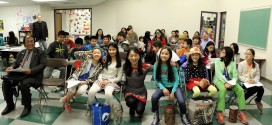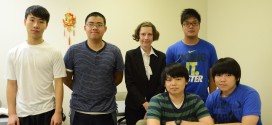By: Lily Qi
The two largest Asian communities in the Washington metro region, Chinese and Indians, are often being talked about by public figures in the same manner and even in the same breath. True, there are many similarities between them, including the highly-educated human capital, the large concentration of STEM (Science, Technology, Engineering and Math) talents, the amazing achievement of both communities in educational attainment and financial success, and the high percentage of immigrant populations in each community. Some even joke that if you go to any IT companies, half of the people there are Indians and the other half are Chinese! But these are two very distinct cultures and communities.
I have long noticed that the local Indian Americans are much more tuned in to social activism and civic engagement, more likely to host or attend political fundraisers and connected with the larger community. When I hosted a forum on legislative issues a few years ago, barely any Chinese came but droves of Indians did. It’s little wonder, then, that the State of Maryland has three Indian Americans in the General Assembly—the highest in the country as I understand.
The local Chinese immigrant community, on the other hand, is far more interested in cultural, social or educational functions, hosting frequent celebrations or learning forums while showing little interest in or even distain toward anything they associate with political activities. In fact, many ethnic Chinese nonprofits or civic groups would make a point of emphasizing that they are “non-profit and non-political.” Efforts to get them interested in civic activism such as speaking up on local issues that would affect their lives are usually met with varying degrees of reluctance, unless it’s about public schools’ policy changes because few things amount to the level of importance of our children’s future.
As an ethnic Chinese with limited knowledge about the Indian culture or history, I had attributed such phenomena to the Indian community’s higher level of English proficiency and greater ease with Western cultures as a former British colony, and to China’s feudalistic cultural heritage. Then I came across a New York Times article by Thomas Friedman called “India vs. China vs. Egypt,” which explained that “India has a weak central government but a really strong civil society, bubbling with elections and associations at every level. China has a muscular central government but a weak civil society…” No wonder!
It reminds me of something I had learned before—that the Indian election is the largest public event in the world!
Clearly, where we came from has an enormous impact on how we conduct ourselves here and where we are going as a community—a manifestation of what’s global is also local. For jurisdictions with large immigrant populations, it serves for leaders to acquire some cultural intelligence on their “diverse communities” to better appreciate the forces at play that shape the way these communities think, act, organize, access information, take care of one another, and view their relationships with their government and the larger society. Such understanding will help them better connect with and localize these “global communities” to make them feel a greater sense of attachment and belonging.
That brings to me to the point of individual success vs. community success. Both the Indian and Chinese communities, and the Muslim community for that matter, are full of high achievers. Yet not every community has leveraged that collective success and turned it into community success to shape our collective future. As our local immigrant communities mature over time—both as individuals and as communities—opportunities abound for greater civic engagement.
There are already promising signs as individuals who came here to pursue education and a better life now become empty nesters and even seniors with more free time for life beyond family and career and as organizations look to be more relevant to their next generations and better connected with the larger community. What we need are thought leaders from these new communities who are not just event planners but also opinion leaders who pay attention to local affairs of the larger community. We don’t have to wait a generation, because today’s immigrants are far more educated and capable of great assimilation and even leadership beyond our own communities. When it comes to civic engagement, the Chinese community doesn’t need to look very far. It can simply rip a page from the books of the Indians and the Muslims.
Lily Qi can be reached at qulturematters@gmail.com or via her blog site at www.qulturematters.com.
Asian Fortune is an English language newspaper for Asian American professionals in the Washington, DC metropolitan area. Visit fb.com/asianfortune to stay up to date with our news and what’s going on in the Asian American community.
 Asian Fortune Your source for all things Asian American
Asian Fortune Your source for all things Asian American




